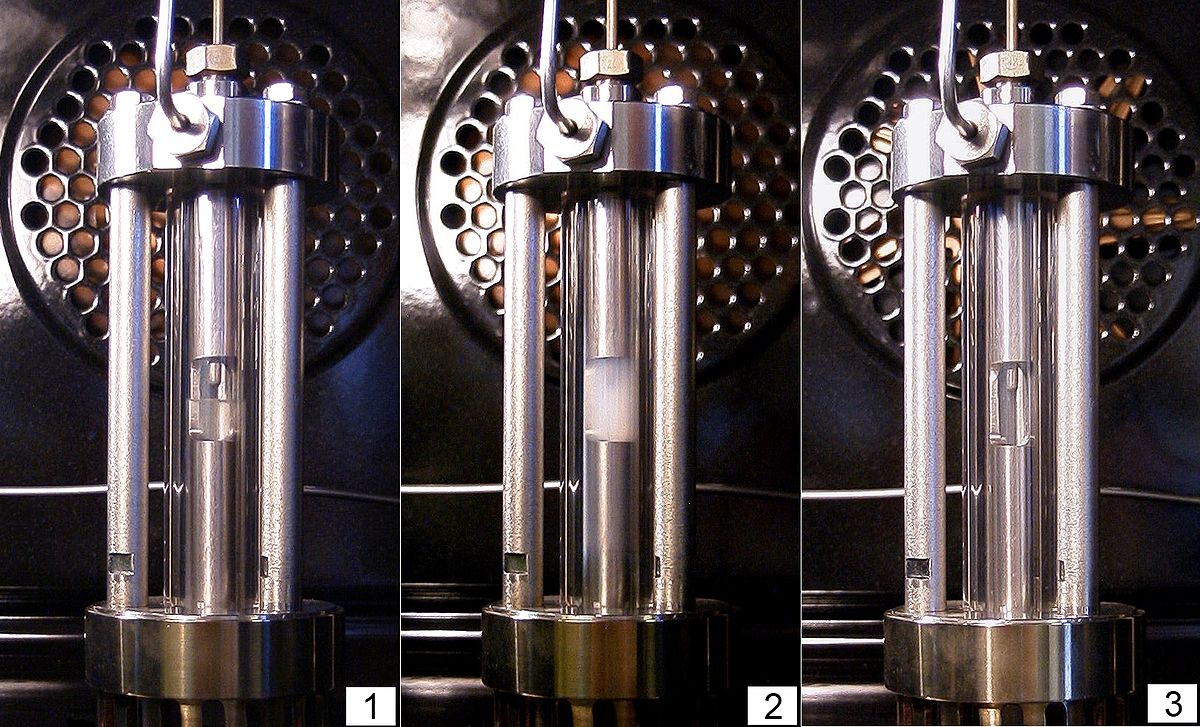
What is a critical point in physics? A critical point in physics refers to the specific conditions of temperature and pressure where the distinction between liquid and gas phases disappears. At this juncture, the substance reaches a state known as a supercritical fluid, exhibiting properties of both liquid and gas. This phenomenon is crucial in various scientific fields, including thermodynamics and material science. Understanding critical points helps scientists and engineers design better systems for energy production, chemical manufacturing, and even food processing. Whether you're a student or just curious, knowing about critical points can open up a world of fascinating scientific principles.
What is a Critical Point?
A critical point in mathematics and physics is where a function's derivative is zero or undefined. These points are crucial in understanding the behavior of functions and systems. Let's dive into some fascinating facts about critical points.
-
Critical points help identify local maxima and minima in functions. These are the highest or lowest points in a particular region.
-
In calculus, a critical point occurs where the first derivative of a function is zero or undefined.
-
Saddle points are a type of critical point where the function does not have a local maximum or minimum but changes direction.
-
Critical points are essential in optimization problems, helping to find the best solution within given constraints.
-
In physics, critical points can indicate phase transitions, such as the change from liquid to gas.
Critical Points in Calculus
Calculus plays a significant role in identifying and analyzing critical points. These points help us understand the behavior of functions and their graphs.
-
Fermat's theorem states that if a function has a local extremum at a point, then the derivative at that point is zero.
-
Second derivative test helps determine whether a critical point is a local maximum, minimum, or saddle point.
-
Inflection points occur where the second derivative changes sign, indicating a change in concavity.
-
Critical points can be found using the first derivative test, which involves analyzing the sign of the derivative before and after the point.
-
Multivariable calculus extends the concept of critical points to functions of several variables, using partial derivatives.
Critical Points in Physics
In physics, critical points are essential in understanding phase transitions and the behavior of materials under different conditions.
-
The critical point of a substance is the temperature and pressure at which the liquid and gas phases become indistinguishable.
-
Supercritical fluids exist beyond the critical point, exhibiting unique properties of both liquids and gases.
-
Critical phenomena refer to the behavior of physical systems near critical points, often involving dramatic changes in properties.
-
Critical exponents describe how physical quantities diverge near the critical point.
-
Renormalization group theory helps explain the behavior of systems near critical points by considering changes in scale.
Real-World Applications of Critical Points
Critical points have numerous real-world applications, from engineering to economics. Understanding these points can lead to better decision-making and optimization.
-
In engineering, critical points help identify stress points in structures, ensuring safety and stability.
-
Economists use critical points to analyze supply and demand curves, finding equilibrium points where markets balance.
-
Biologists study critical points in population dynamics, understanding how populations change and stabilize.
-
Meteorologists use critical points to predict weather patterns, identifying points where significant changes occur.
-
Chemists study critical points to understand reaction rates and equilibrium in chemical processes.
Fun Facts About Critical Points
Critical points aren't just for serious study; they also have some fun and surprising aspects.
-
Chaos theory involves critical points, where small changes can lead to unpredictable and complex behavior.
-
Fractals often have critical points, where self-similar patterns emerge at different scales.
-
Game theory uses critical points to find optimal strategies in competitive situations.
-
Computer graphics rely on critical points to create realistic animations and simulations.
-
Music theory can involve critical points, analyzing how changes in pitch and rhythm create harmony and tension.
The Final Word on Critical Points
Critical points are key in understanding various fields like mathematics, physics, and engineering. They help identify where functions change behavior, which can be crucial for solving complex problems. Knowing about critical points can improve problem-solving skills and deepen comprehension of how systems work.
These points are not just theoretical; they have practical applications. Engineers use them to design safer structures, economists to predict market trends, and scientists to understand natural phenomena. Recognizing where these points occur can lead to more accurate predictions and better outcomes.
So, next time you encounter a complex problem, think about critical points. They might just be the key to unlocking a solution. Understanding their importance can make a big difference in both academic and real-world scenarios. Keep this knowledge handy; it’s a valuable tool in any problem-solving toolkit.
Was this page helpful?
Our commitment to delivering trustworthy and engaging content is at the heart of what we do. Each fact on our site is contributed by real users like you, bringing a wealth of diverse insights and information. To ensure the highest standards of accuracy and reliability, our dedicated editors meticulously review each submission. This process guarantees that the facts we share are not only fascinating but also credible. Trust in our commitment to quality and authenticity as you explore and learn with us.
